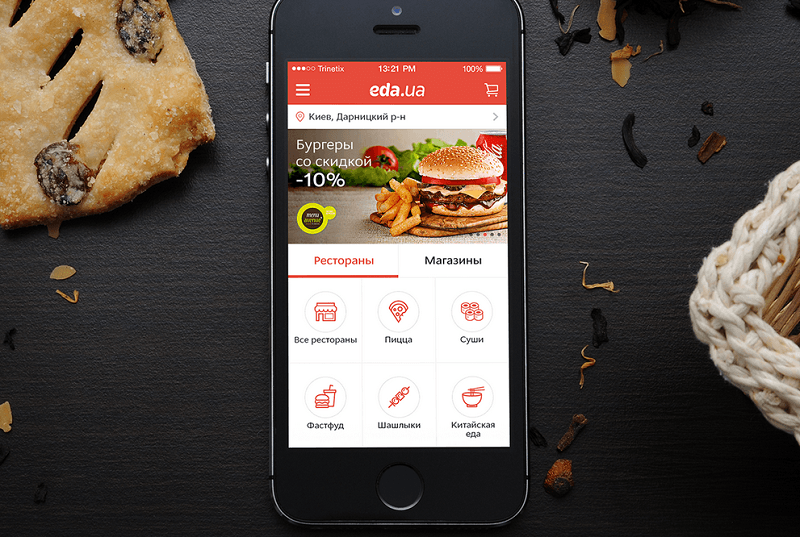
Mobile app developers are under constant pressure due to the unexpected increase of a mobile user all around the world.
According to a Statista research, a number of mobile phone users in the world is expected to pass five billion mark by 2019, which increase the demand for mobile application. Another research from Smart Insight suggests that 90 percent of consumer’s mobile time is spent in apps.
To keep up with this fast-paced requirement of the mobile application development, developers need to set some best practices in the design and deployment of a mobile application, which will help them develop a quality mobile application for their end users.
In this article, we will guide you through 8 best practices of mobile application development.
Security of the app
Security of an app should be your central concern in app development process. A recent research from Arxan reveals that.
- 100% of the top paid apps on the Google Android platform had been hacked
- 56% of the top paid apps for Apple iOS had been hacked
- 73% of the popular free apps on Android had been hacked
- 53% of popular free apps on Apple iOS had been hacked
These facts are far enough to convince you that you must think about app security from the start of app development process.
Here are a few security aspects you should focus on from the outset:
- Authentication: – the way the user log in
- Data at rest: – stored data on device
- Data transfer: – received and transmitted data
- Code security: – the app code in the client
- App distribution: – having the app distributed from a trusted source
- Memory integrity & security: – debugging the application
- Application tampering: – codes of the app should not be altered
- Version check: – older version may cause vulnerabilities.
Here are some best practices for mobile app security:
- Use method such as content control to limit copy and paste actions, and use “open in” restriction to prevent your app from opening dangerous content
- Always test your code in real world by verifying the download and user installation process used by your app.
- Use two factor authentication that require more than one authentication channel. You can also use third party application like Authy to simplify two factor authentication processes.
- Use SSL certificate within the communication which secure your data transfer
- Do not keep sensitive data in memory more than needed, delete or change it after it was used
Keep a close eye on latest app design trends
In app development industry, design trends emerge frequently. So in order to stand out, developers must be keep themselvers updated with app design trends too.
Trends like the material design, functional animation and motion design, card layout, and UX/UI design for wearables, which improve app user experience across platforms making it more unified, simple, and intuitive.
The most commonly used mobile app design trend is material design, which uses techniques like gradients, shadows, and other subtle, 3D effects.
Material design can be seen in various popular apps like Evernote, Telegram, Lyft, and Tumblr.
Determine the right methodology to make app
Determining the right methodology is a key to develop a successful mobile app. Especially, when a developer is developing a cross-mobile platform where a developer has to think of a different angle to create an app.
Use Agile Scrum methodology
Scrum is the agile structure that break the app development process into smaller chunks rather than a formal project plan.
Each chunk is referred to as a Scrum, which is managed by an individual project manager who is generally referred to as a “Scrum Master”.
This technique is quite helpful in keeping the team focused on its goals
Provide good user experience to users
User experience of the mobile app is another critical factor, which you cannot ignore because your app user experience ensures the success of the mobile app.
Do you know 25% of apps are abandoned after a single day use? Paying close attention to your app’s user experience across all mobile platforms is crucial for your success as a developer.
The story of Eda.ua – Food Delivery iPhone App
This app has both an iOS and Android version with a very friendly UI designed especially for the food delivery business.

In order to meet usability standards, the designers conducted intensive market research and took note of various offbeat ideas. Then, they created and tested an interactive prototype with over 100 wireframes to ensure that the app design meets the needs of the client’s business.
The mobile app contains hundreds of restaurants all over Ukraine, so the developers put flexible filters and smart searches to enable users to find what they want in restaurants.
Focus on custom libraries
Most mobile developers use third party libraries to accelerate the development process.
But, using many third party libraries make an app unnecessary heavy and hard to maintain. Plus, it increase the loading time of an app.
Therefore, it is better to focus on your custom libraries, which will keep your app size and your maintenance cost minimum.
Example of custom libraries that can speed up your coding process.
- EventBus: – EventBus simplifies communication between different part of your application.For example sending something from an activity to a running service, or easy interaction between fragments.
- CloudRail: – CloudRail helps you integrate services via API much faster. It provides services like Dropbox, Google Drive, and OneDrive into single unified API. Moreover it handles API updates for you and keep the API for your code consistent.
- Retrofit: – Retrofit is a type safe REST client for Android, which basically turns an HTTP API into a Java interface.
Streamline application development process by using cloud development platform
According to Evan Data Cloud Development Survey, cloud platforms reduce overall development time by an average of 11.6 percent.
This is because cloud platform has ability to streamline development process, including the ability to quickly get the development assets online.
Moreover, cloud platform provides the ability to collaborate with other developers, architects, and designers in the development process of application which saves the development time.
Here are some cloud based tools for creating mobile apps
- Appery.io: – Appery.io helps in building cross-platform HTML5 applications. Plus, it supports Windows phone, iOS, and Android, and it lets you make ample use of integrated PhoneGap/ Apache Cordova output.
- Conduit: – Conduit allows you to create amazing designs easily without any sort of coding for both android and iOS platform in a minute.
This tool is enriched with a variety of components including RSS, e-commerce, social feed, notification, events, and much more. - Kinvey: – Kinvey is technical cloud-based app development platform, which eliminates risk by reducing the backend development time. Plus, it allows you to prototype faster with less effort.
Incorporate Application Analytics
“Measurement is the first step that leads to control and eventually to improvement. If you can’t measure something, you can’t understand it. If you can’t understand it, you can’t control it. If you can’t control it, you can’t improve it.” – H. James Harrington
Incorporating application analytics is one the important best practice which helps you improve your app performance and keep a user engaged.
Analytics help you in identifying which features worked or which didn’t and whether users are interacting with the app the way you expected.
Here are some key performances which you should measure:
- Find out where your users are coming from and how many sessions they’ve enjoyed
- Measure how many people opened your app repeatedly after downloading it
- Measure which features user interact the most. Which do they ignore?
- Measure the retention rate which helps you to determine how our app fits into user lives.
Understand your target audience
Before you start developing a mobile app, it is important to know your target audience. The key identification of your target audience helps you develop your mobile application according to your audience requirement.
Here are three questions which will give you a better idea of your target audience.
Question 1. Who is your target audience?
Painting picture of your target audience keeps you roll in the right direction and help you figure out the right audience for your app. Consider the following factors
- Age
- Gender
- Location
- Marital/Family Status
- Income Level
- Education Level
- Occupation
Question 2. What are your target audience most common problems?
Understanding your target audience most common problems help you easily market your product in front of your audience. Remember, people will attract to that product which primarily solves their problems.
Question 3.Where is your target audience?
Knowing your target audience is not just enough, you have to find out where your target audience mainly hangout, from which app store they download the app and which social media channel they frequently used.
By finding this information you can target your audience more efficiently.


